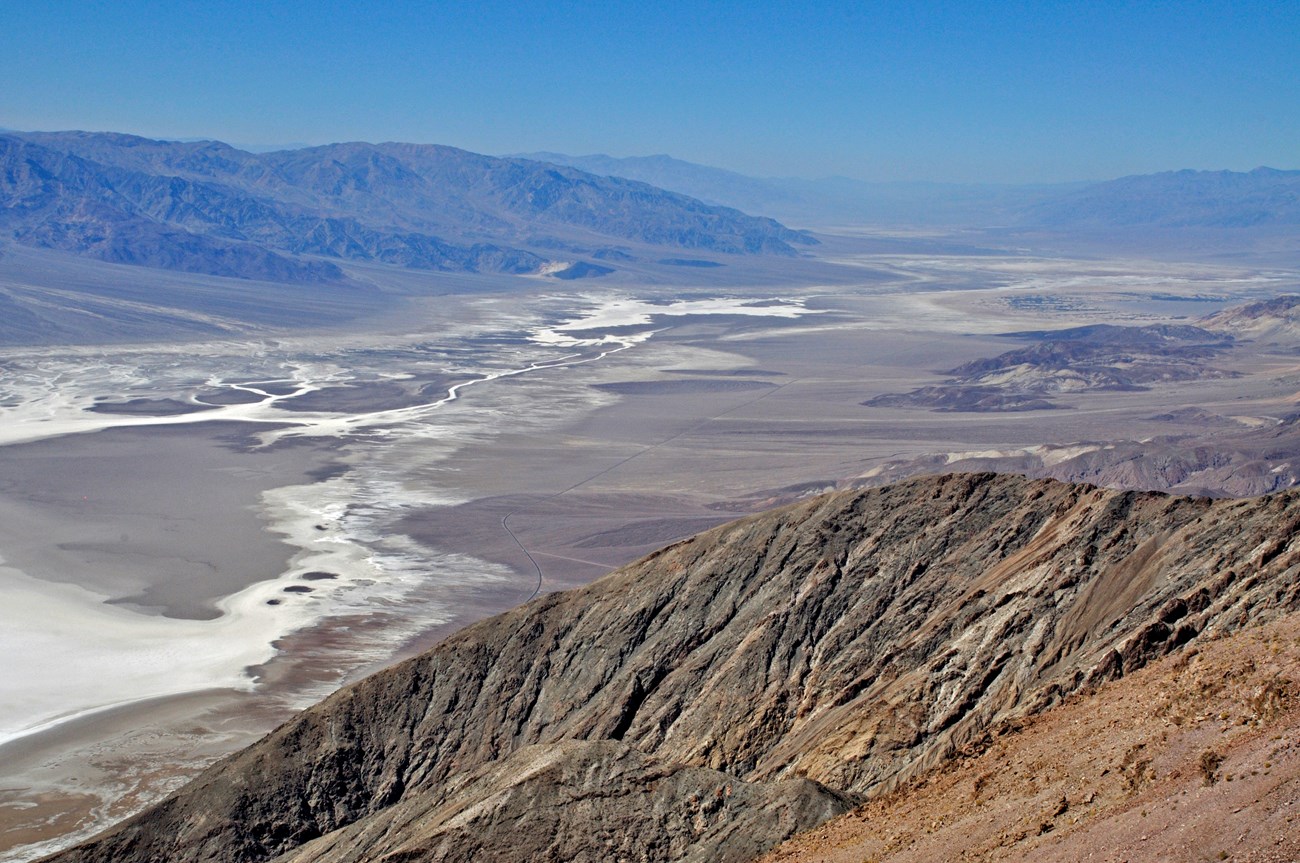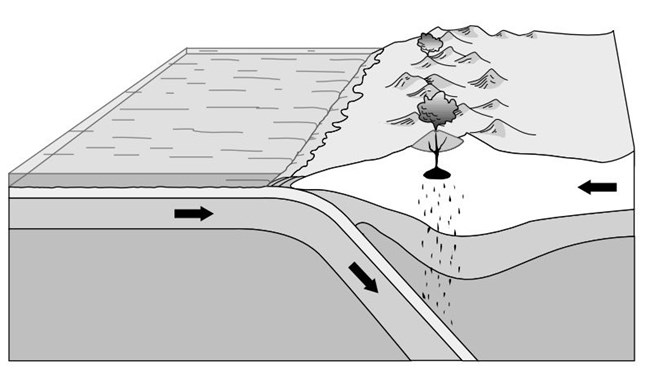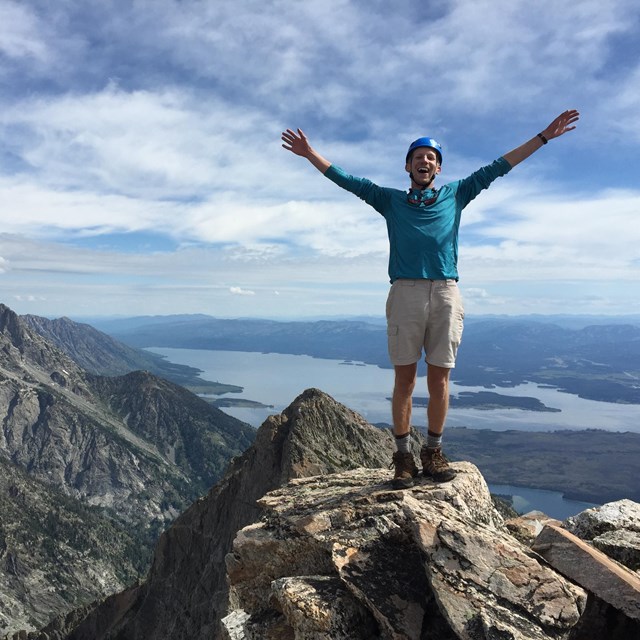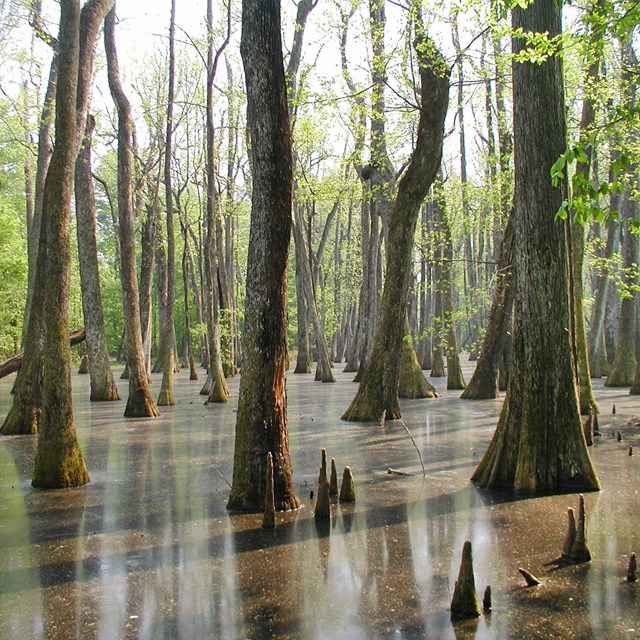|
This webpage has been replaced with an expanded website, Plate Tectonics & Our National Parks. For teachers and students using this older version on a web quest, this page will remain available through the Fall 2020 semester. 
IntroductionWe live on a layer of Earth known as the lithosphere which is a collection of rigid slabs that are shifting and sliding into each other. These slabs are called tectonic plates and fit together like pieces to a puzzle. The shifts and movements of these plates is what shapes our landscape by forming mountain ranges, transforming the ocean floor, and shaping lands near plate boundaries. The theory of plate tectonics is an important geologic concept as it fills in the gaps to Earth's geologic history—It is not an exaggeration to paraphrase the biologist Theodosius Dobzhansky and say that 'nothing in geology makes sense except in the light of plate tectonics.' The crust is the thin, solid, outermost layer of the Earth. The crust is thinnest beneath the oceans, averaging only 5 kilometers thick, and thickest beneath large mountain ranges. Continental crust is much more variable in thickness but averages about 30-35 km. Beneath large mountain ranges, such as the Himalayas or the Sierra Nevada, the crust reaches a thickness of up to 100 km.
The layer below the crust is the mantle. The mantle has more iron and magnesium than the crust, making it more dense. The uppermost part of the mantle is solid and, along with the crust, forms the lithosphere. The rocky lithosphere is brittle and can fracture. This is the zone where earthquakes occur. It’s the lithosphere that breaks into the thick, moving slabs of rock—the Tectonic plates.
Deeper into the Earth, the temperature rises to the point where part of the mantle is partially molten, the asthenosphere. As rock heats up, it becomes pliable or ‘plastic’. Rock here is hot enough to fold, stretch, compress, and flow very slowly without fracturing. The plates, made up of the relatively light, rigid rock of the lithosphere ‘float’ on the more dense, flowing asthenosphere. At the center of the Earth lies the super-dense core. With a diameter of 3486 kilometers, the core is larger than the planet Mars. The core of the Earth is made up of two distinct layers: a liquid outer layer and a solid inner core. Unlike the Earth’s outer layers with rocky compositions, the core is made up of metallic iron-nickel alloy. The material at the core is about 5 times as dense as the rock we walk on at the surface.
The Action is at The EdgesBelow is a map of the tectonic plates of the earth. The Earth has a dozen or so major plates and several minor plates. Tectonic plates are constantly on the move. The fastest plate races along at 15 centimeters (6 inches) per year while the slowest plates crawl at less than 2.5 centimeters (1 inch) per year. Many potentially catastrophic geologic phenomena, such as earthquakes, volcanic eruptions, and tsunamis originate at the narrow boundary zones between plates. 
Modified from: R.J. Lillie. 2005. Parks and Plates. There are three basic things that can happen where the edge of one plate meets another.
Along convergent boundaries, mountain building and volcanism occurs. Divergent boundaries are where new crust is being created. Wherever plates grind against each other, earthquake activity can occur. Tectonic Features and ProcessesThe motions of the plates have a tremendous ability to shape and deform rocks through a variety of processes that include folding, faulting, extension, and, on a massive scale, mountain building. 
United States Geological Survey New crust is constantly being created at rifts zones, or mid-ocean ridges where lava cools as new rock. Crust is also being constantly consumed at subduction zones, where thin and dense oceanic crust slides undernearth thick and (relatively) buoyant continental crust. Tectonic Landforms in Parks
Educational ResourcesBelow are a variety of educational materials to help students gain an understanding of continental drift, faulting, and the processes associated with plate tectonics. Related LinksMoab Happenings
Trista L. Thornberry-Ehrlich, Colorado State University. Modified from: R.J. Lillie. 2005. Parks and Plates. |
Last updated: December 28, 2020


